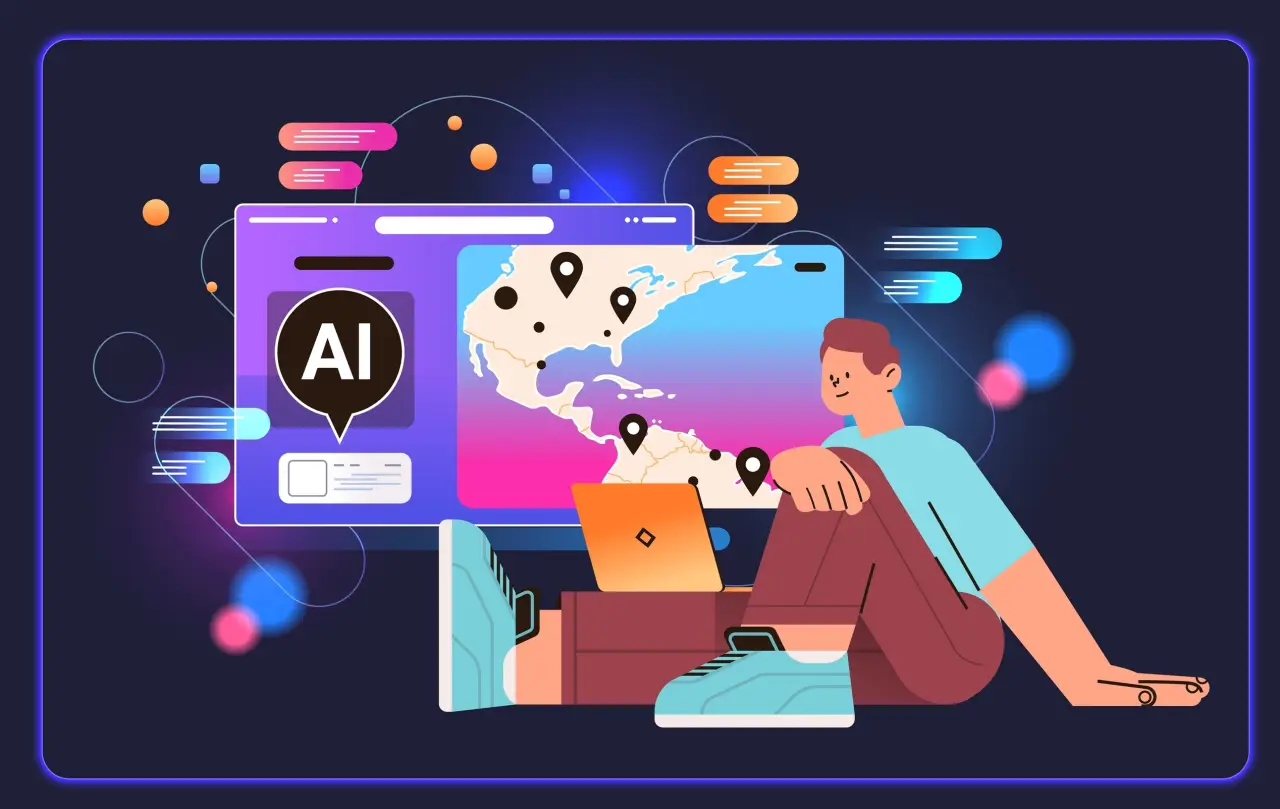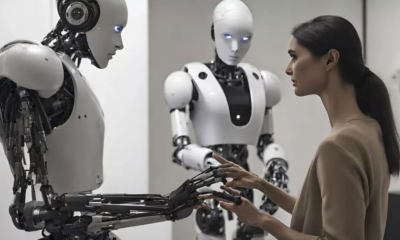AI Insights
The artificial intelligence revolution is approaching, and experts warn of changes that could transform the world

Humanity faces the possibility of reaching technological singularity in less than a decade, according to estimates by technologists and specialists. This concept, which for years remained linked to science fiction, describes the moment when artificial intelligence (AI) surpasses human capabilities and revolutionizes society. Recent advances in systems like ChatGPT and in areas such as machine translation have accelerated this process, sparking both excitement and concern for the immediate future.
The fundamental question no longer lies in the possibility of singularity, but rather in the timing and manner in which it will change daily life, employment, and the international economy.
The Meaning and Impact of Technological Singularity
The term “singularity” was coined in 1993 by Vernor Vinge, a computer scientist and writer, to denote the point at which technological development becomes uncontrollable and creates an environment beyond human understanding. The singularity implies that AI surpasses human intelligence, which would trigger social and economic transformations of unforeseeable proportions.
The importance of this concept stems from its ability to reconfigure every aspect of contemporary life. Advanced medical solutions, transformations in work and creativity, and ethical and existential challenges are just some of the possible consequences. Forbes highlights that the singularity represents, for some experts, an opportunity to solve major human problems, while others warn of the risks of unexpected consequences and advocate the urgency of a profound debate on its regulation.
AI Advances and the Time to Edit Metric
One of the most concrete indicators of progress toward the singularity comes from the Rome-based company Translated. According to Popular Mechanics, Translated developed a metric called Time to Edit (TTE), which measures how long it takes a professional human editor to review AI-generated translations compared to those produced by humans. This tool makes it possible to quantify the evolution of AI in complex language-related tasks.

Between 2014 and 2022, Translated analyzed more than two billion corrections from human editors. In 2015, editing a machine translation took about 3.5 seconds per word; today, that time has dropped to two seconds. If the trend continues, this AI could match human translators before the end of the decade.
Marco Trombetti, CEO, explained to Popular Mechanics: “The change is so small that you don’t notice it every day, but when you see the progress over ten years, it’s impressive.” This evolution, Trombetti emphasizes, constitutes the first concrete prediction about the pace at which humanity is approaching the singularity in the field of artificial intelligence.
Although achieving perfect machine translation is not the same as achieving artificial general intelligence (AGI), progress in natural language processing remains one of the greatest challenges for AI.
Optimism, Caution, and What-Ifs

The debate about the imminence and impact of the technological singularity brings together diverse opinions. Sam Altman, executive director of OpenAI, states: “We have already built systems that are smarter than humans in many ways and are capable of significantly amplifying the output of those who use them.” In his blog, Altman argues that tools like ChatGPT already outperform any human in specific tasks, and scientific and creative productivity has multiplied thanks to AI. His projections predict agents capable of performing real cognitive work in 2025, systems that will discover new knowledge in 2026, and robots that will perform physical tasks in 2027.
Futurist Ray Kurzweil, quoted by Forbes, places the arrival of the singularity in 2029, although he clarifies that it will not be an abrupt moment, but a gradual process. “We won’t know we’ve crossed the threshold until we’re already immersed in it,” Kurzweil states. On the other hand, Marc Andreessen, co-creator of the Mosaic browser, is confident that AI will help us tackle disease and scarcity and elevate human creativity to new levels.
There are also voices of caution. Forbes emphasizes that every major technological revolution has brought unexpected consequences and that the singularity could exacerbate social and ethical tensions if not handled responsibly. Altman himself acknowledges: “A small misalignment multiplied by hundreds of millions of people can have a large negative impact,” underscoring the urgency of addressing AI safety and alignment.
The Stages Toward Singularity: From Support to Total Transformation
The journey toward singularity doesn’t present itself as a sudden rupture. According to Forbes, several phases are already underway. The first corresponds to the “relinquishing agency,” which consists of ceding control to AI assistants integrated into daily life. Professionals across multiple sectors rely on these systems to compose messages, generate reports, and manage agendas. As these assistants become more advanced, their capabilities begin to match those of humans.
The next stage, called “Emergent Cognition” corresponds to the emergence of AI models capable of planning and pursuing their own goals. Here, AI not only responds, but also exhibits initiative, manages businesses, manages infrastructure, and creates literary works with little supervision. In parallel, human augmentation technologies—from real-time translation headsets to cognitive enhancement devices—drive hybrid intelligence.
The third phase, “Cognitive Escape Velocity,” marks the emergence of AGI, with models that surpass human cognition and rapidly redesign their architecture. Sectors such as education, research, and governance undergo profound transformations. Philosophical and ethical discussions about AI consciousness and rights gain prominence.

Finally, the “Threshold” indicates the moment when humanity ceases to be the most intelligent species on the planet. The work-based economy is transforming, governments are facing unprecedented challenges, and part of the population is choosing to merge with AI through implants or brain interfaces. Forbes highlights: “The rules of life are changing, and the old ones are fading from memory.”
Fundamental Impacts: Opportunities and Challenges
The technological singularity could create an unprecedented abundance of intelligence and energy, resources that have historically limited human development. Sam Altman of OpenAI asserts that the capacity for individual action will be much greater in 2030 than in 2020. AI has already multiplied the productivity of scientists and other professionals, and automation in robotics and data centers is expected to make access to artificial intelligence as cheap as electricity.
This accelerated progress entails considerable challenges. Forbes warns of the possible disappearance of traditional jobs, the reduction of attention and memory spans, and the transformation of social ties. Already in the last decade, the intensive use of mobile devices and social media has changed human relationships, increasing anxiety and isolation; this phenomenon foreshadows the potential effects of AI deeply embedded in everyday life.
On the economic front, the generation of value through AI has inaugurated a cycle of investment and infrastructure development that is changing entire industries. However, the equitable distribution of benefits and access to superintelligence remain key challenges. Altman emphasizes the priority of “making superintelligence cheap, widespread, and not concentrated in a few.”
Urgent Challenges: Alignment and Social Debate
The consensus among experts indicates that the singularity is not necessarily an inevitable destiny nor does it guarantee positive effects. Everything will depend on collective decisions about the management and distribution of artificial intelligence. Sam Altman insists that “it is essential to solve the challenge of alignment and ensure that AI systems learn and act in accordance with humanity’s long-term interests.”
Social media algorithms, which prioritize short-term attention at the expense of well-being, illustrate the dangers of misaligned AI.
Forbes proposes a regulatory framework that recognizes both the promises and risks of AI. Preparing for the singularity requires developing wisdom alongside intelligence and ensuring that the benefits reach all of society, not just an elite. The public debate about the limits, rights, and responsibilities of AI must involve governments, businesses, and citizens together.
The move toward the singularity is gradual, driven by continuous and often imperceptible developments that are already transforming daily life. Humanity must adapt, learn, and collectively choose how to navigate this new horizon, in which artificial intelligence will define the meaning of humanity.
Technological singularity may transform society sooner than expected; the superabundance of intelligence and energy will alter human progress, and the debate about alignment and access will be key going forward.
AI Insights
Here’s what parents need to know about artificial intelligence

ChatGPT, AI chatbots, and the growing world of artificial intelligence: it’s another conversation parents may not have planned on having with their kids.
A new Harvard study found that half of all young adults have already used AI, and younger kids are quickly joining in.
Karl Ernsberger, a former high school teacher turned AI entrepreneur, says that’s not necessarily a bad thing.
“It is here to stay. It’s like people trying to resist the Industrial Revolution,” Ernsberger said.
Ernsberger believes tools like chatbots can be powerful for learning, but only if kids and parents know the limits.
One example is “Rudi the Red Panda,” a virtual character available for free in kids mode on X’s Grok AI. When asked, Rudi can even answer questions about Arizona history.
GROK
“The five C’s of Arizona are Copper, Cotton, Cattle, Citrus, Climate,” Rudi said.
But Ernsberger warns that children may struggle to understand that Rudi isn’t real, and that “friendship” with a chatbot is different from human connection.
“It’s hard for the student to actually develop a real friendship,” he said. “They get confused by that because friendship is something they continue to learn about as they get older.”
When asked if Rudi was really my best friend, it replied: “I’m as real as a red panda can be in your imagination. I’m here to be your best friend.”
That, Ernsberger says, is where parents need to step in.
For families trying to keep kids safe while exploring AI, Ernsberger’s first recommendation is simple.
“Use it yourself. There are so many use cases, so many different things that can be done with AI. Just finding a familiarity with it can help you find the weaknesses for your case, and its weaknesses for your kids.”
Then he says if your child is using AI, be there with them to watch over and keep the human connection.
“The key thing with AI is it’s challenging our ability to connect with each other, that’s a different kind of challenge to society than any other tool we’ve built in the past,” Ernsberger said.
Regulators are paying attention, too.
Arizona Attorney General Kris Mayes, along with 43 other state attorneys general, recently sent a letter to 12 AI companies, including the maker of Rudi, demanding stronger safeguards to protect young users.
AI Insights
This MOSI exhibit will give you a hands-on look at artificial intelligence – Tampa Bay Times
AI Insights
Spain Leads Europe in Adopting AI for Vacation Planning, Study Shows

Spain records higher adoption of Artificial Intelligence – AI in vacation planning than the European average, according to the 2025 Europ Assistance-Ipsos barometer.
The study finds that 20% of Spanish travelers have used AI-based tools to organize or book their holidays, compared with 16% across Europe.
The research highlights Spain as one of the leading countries in integrating digital tools into travel planning. AI applications are most commonly used for accommodation searches, destination information, and itinerary planning, indicating a shift in how tourists prepare for trips.
Growing Use of AI in Travel
According to the survey, 48% of Spanish travelers using AI rely on it for accommodation recommendations, while 47% use it for information about destinations. Another 37% turn to AI tools for help creating itineraries. The technology is also used for finding activities (33%) and booking platform recommendations (26%).
Looking ahead, the interest in AI continues to grow. The report shows that 26% of Spanish respondents plan to use AI in future travel planning, compared with 21% of Europeans overall. However, 39% of Spanish participants remain undecided about whether they will adopt such tools.
Comparison with European Trends
The survey indicates that Spanish travelers are more proactive than the European average in experimenting with AI for holidays. While adoption is not yet universal, Spain’s figures consistently exceed continental averages, underscoring the country’s readiness to embrace new technologies in tourism.
In Europe as a whole, AI is beginning to make inroads into vacation planning but at a slower pace. The 2025 Europ Assistance-Ipsos barometer suggests that cultural attitudes and awareness of technological solutions may play a role in shaping adoption levels across different countries.
Changing Travel Behaviors
The findings suggest a gradual transformation in how trips are organized. Traditional methods such as guidebooks and personal recommendations are being complemented—and in some cases replaced—by AI-driven suggestions. From streamlining searches for accommodation to tailoring activity options, digital tools are expanding their influence on the traveler experience.
While Spain shows higher-than-average adoption rates, the survey also reflects caution. A significant portion of travelers remain unsure about whether they will use AI in the future, highlighting that trust, familiarity, and data privacy considerations continue to influence behavior.
The Europ Assistance-Ipsos barometer confirms that Spain is emerging as a frontrunner in adopting AI for travel planning, reflecting both a strong appetite for digital solutions and an evolving approach to how holidays are designed and booked.
Photo Credit: ProStockStudio / Shutterstock.com
-
Tools & Platforms3 weeks ago
Building Trust in Military AI Starts with Opening the Black Box – War on the Rocks
-

 Business2 days ago
Business2 days agoThe Guardian view on Trump and the Fed: independence is no substitute for accountability | Editorial
-

 Ethics & Policy1 month ago
Ethics & Policy1 month agoSDAIA Supports Saudi Arabia’s Leadership in Shaping Global AI Ethics, Policy, and Research – وكالة الأنباء السعودية
-

 Events & Conferences3 months ago
Events & Conferences3 months agoJourney to 1000 models: Scaling Instagram’s recommendation system
-

 Jobs & Careers2 months ago
Jobs & Careers2 months agoMumbai-based Perplexity Alternative Has 60k+ Users Without Funding
-

 Funding & Business2 months ago
Funding & Business2 months agoKayak and Expedia race to build AI travel agents that turn social posts into itineraries
-

 Education2 months ago
Education2 months agoVEX Robotics launches AI-powered classroom robotics system
-

 Podcasts & Talks2 months ago
Podcasts & Talks2 months agoHappy 4th of July! 🎆 Made with Veo 3 in Gemini
-

 Podcasts & Talks2 months ago
Podcasts & Talks2 months agoOpenAI 🤝 @teamganassi
-

 Mergers & Acquisitions2 months ago
Mergers & Acquisitions2 months agoDonald Trump suggests US government review subsidies to Elon Musk’s companies






















